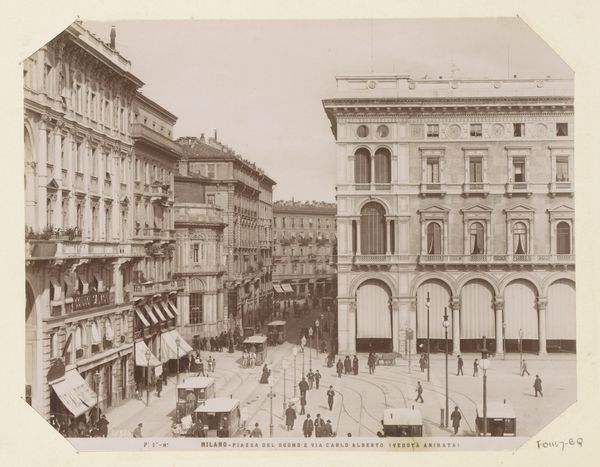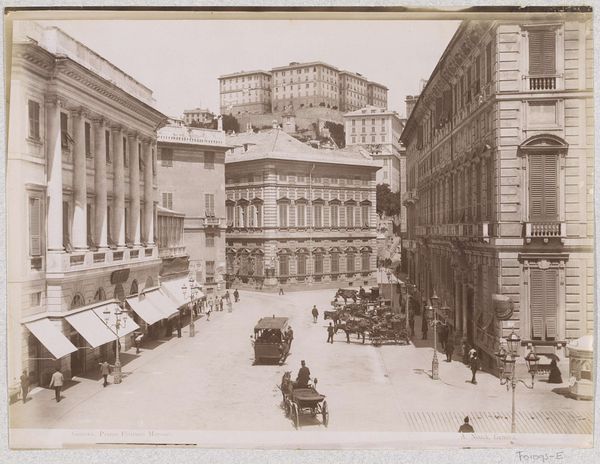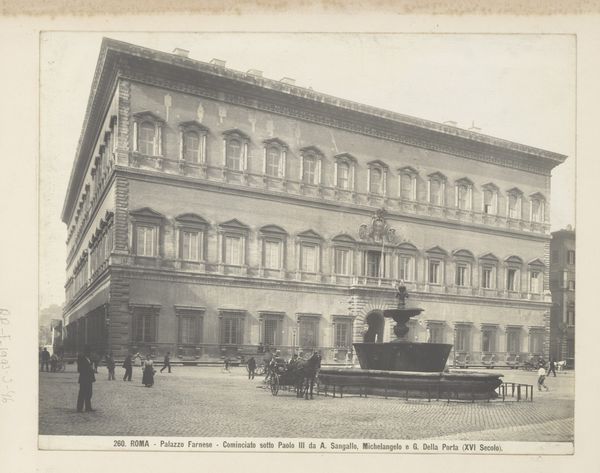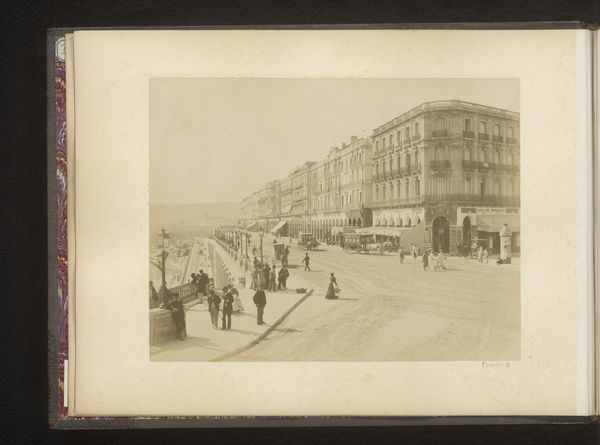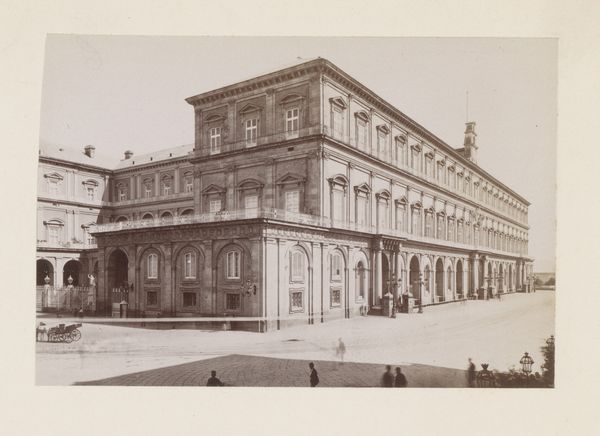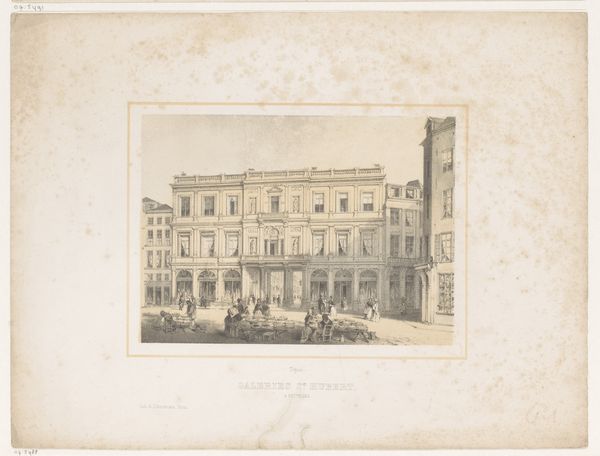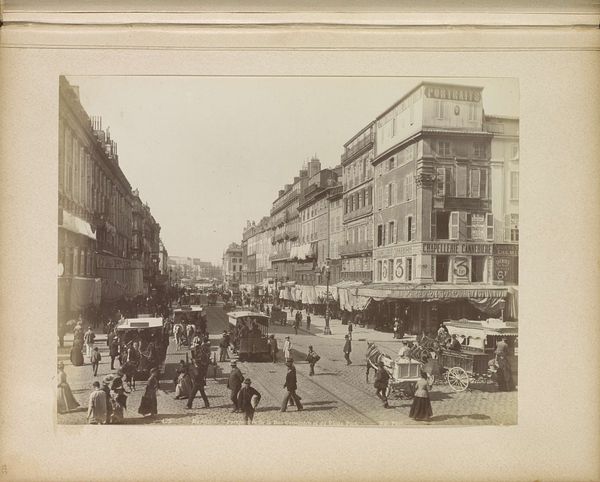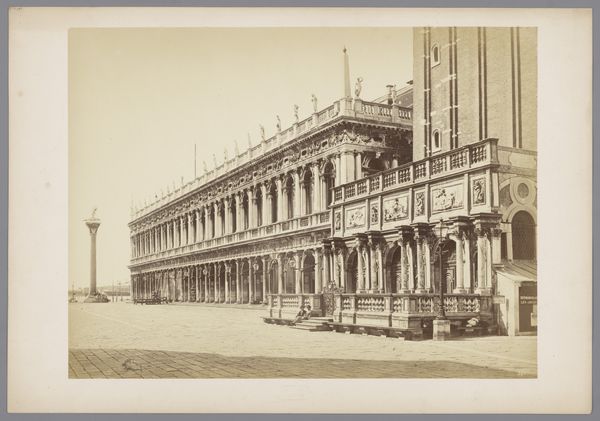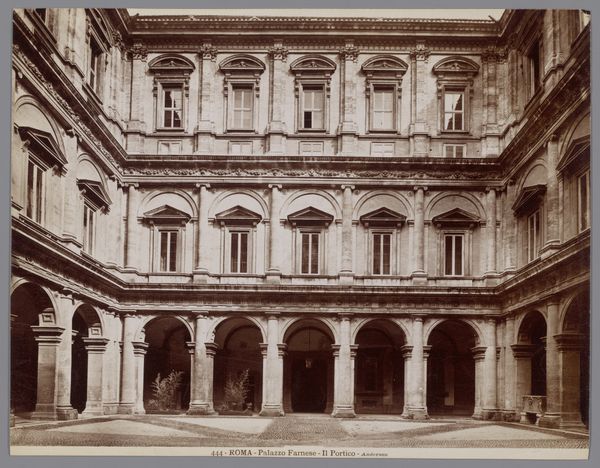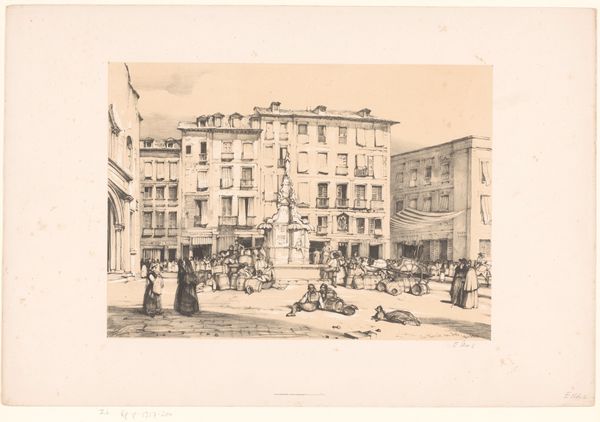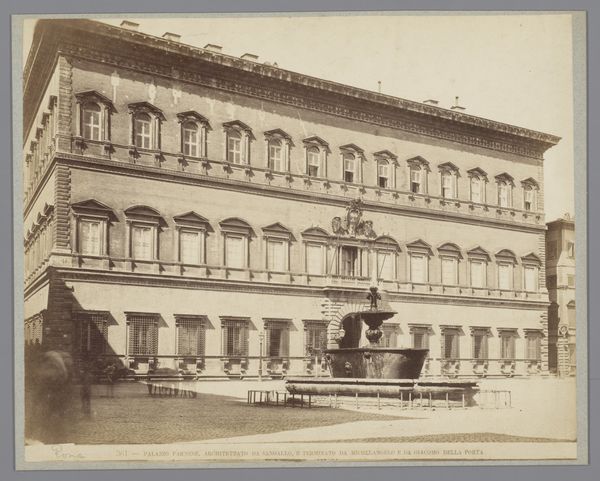
photography
#
atmospheric exterior photography
#
street-photography
#
photography
#
19th century
#
cityscape
#
realism
Dimensions: height 197 mm, width 249 mm, height 492 mm, width 330 mm
Copyright: Rijks Museum: Open Domain
Curator: This is "Corso Vittorio Emanuele, Milan, Italy", a photograph by Edizione Brogi, dating from somewhere between 1860 and 1890. The scene has a lovely muted quality, a soft focus on this grand Milanese street, bustling with commerce and the implied labor to support it all. What strikes you about it? Editor: I'm curious about the act of capturing such a complex scene in that era. It feels like there would be a significant time and labor investment that maybe the contemporary viewer wouldn't appreciate at first glance. Can you unpack the technical demands of this type of street photography at that time? Curator: Certainly. Think about the photographer's considerations: the collodion process, the exposure time, the cumbersome equipment lugged through a busy commercial space, and the developing processes involved with producing a consistent aesthetic output for a growing, visually hungry consumer market. Every print represented time and capital in materials. How does thinking about that impact your interpretation of the image? Editor: I hadn't really considered the consumption part until now. Knowing that these images were created not just as records but for a burgeoning market definitely shifts my understanding. This changes my initial perception as documentation; now I think of its commercial potential at the time. What does this mass replication imply in terms of social class, commodification, and availability of art for everyone? Curator: Precisely. It raises crucial questions about access to art and its role in shaping social perceptions. This photograph, once viewed as a window onto a specific moment, reveals a far broader landscape of industrial production, capitalistic desires, and early visual consumerism. Are photographs like these evidence of democracy in art making? Editor: I hadn't considered this broader landscape. That provides a fresh way of viewing not only photography, but its effect on popular culture and the artist’s creative labor itself! Curator: Absolutely. Paying close attention to those elements brings us closer to understanding the societal forces and individual agencies at play, visible beneath this quiet urban scene.
Comments
No comments
Be the first to comment and join the conversation on the ultimate creative platform.
